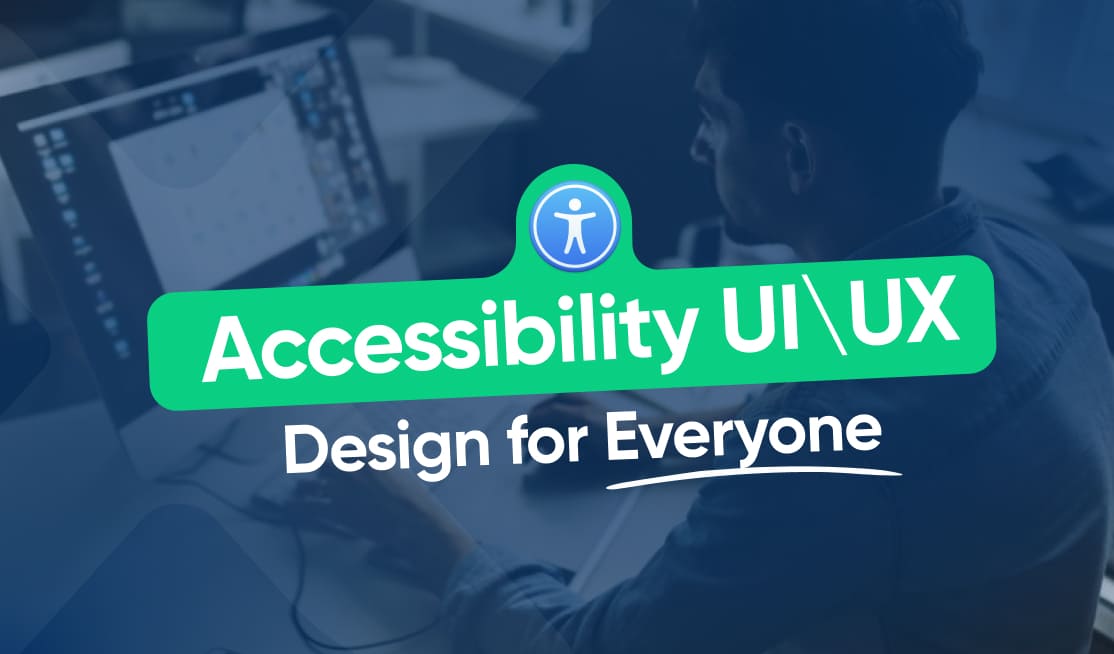
Accessibility is a key consideration in today’s digital landscape. For designers, it is essential to create experiences that are inclusive and accessible to all users, regardless of their abilities or disabilities. Ignoring accessibility not only excludes a significant portion of the population but also leads to legal and ethical consequences. In this article, we will explore the importance of accessibility in design, the principles of accessible design, incorporating accessibility in different design elements, tools and techniques for accessible design, and strategies to overcome common challenges in accessible design.
Understanding the Importance of Accessibility in Design
Accessibility, in the context of design, refers to the ability of a product or service to be easily used by individuals with disabilities. It encompasses various aspects, including visual impairments, hearing impairments, motor disabilities, and cognitive limitations. Designers must focus on creating inclusive experiences that consider the needs of all users, providing them with equal access to information and functionality.
Ensuring accessibility in design goes beyond mere compliance with regulations; it is about fostering a culture of inclusivity and empathy. By prioritizing accessibility, designers can enhance user experiences for everyone, not just those with disabilities. For example, implementing features like clear navigation and concise content benefits all users, leading to a more user-friendly and intuitive design.
Defining Accessibility in the Context of Design
Accessibility in design involves implementing features and functionalities that enable individuals with diverse abilities to navigate, interact with, and comprehend digital content. It encompasses considerations such as color contrast, font sizes, keyboard navigation, alternative text for images, and clear instructions.
Moreover, accessibility in design is an ongoing process that requires continuous evaluation and improvement. Designers should conduct usability testing with individuals of varying abilities to identify barriers and make necessary adjustments to ensure a seamless user experience for all.
The Impact of Inaccessible Design
Inaccessible design not only limits access to information but also affects user engagement and satisfaction. It can lead to frustration, abandonment of tasks, and exclusion of individuals with disabilities from participating fully in digital experiences. Additionally, organizations that do not prioritize accessibility may face legal consequences and damage to their reputation.
Furthermore, inaccessible design can result in missed business opportunities. By neglecting to cater to the needs of all users, companies risk alienating a significant portion of their potential customer base. Embracing accessibility not only aligns with ethical principles but also makes good business sense, as it broadens the reach and impact of products and services.
Principles of Accessible Design
When designing with accessibility in mind, several principles should guide the process. These principles ensure that the design is inclusive and provides a seamless experience for all users.
Accessibility in design goes beyond just meeting basic standards; it’s about creating a digital environment that is welcoming and usable for everyone. By incorporating accessibility principles from the outset, designers can proactively address the diverse needs of users and foster a more inclusive online experience.
Color and Contrast for Accessibility
Color plays an important role in design, but it can also pose challenges for individuals with visual impairments. To ensure accessibility, designers must consider color contrast ratios, providing sufficient differentiation between foreground and background elements. This allows users with color blindness or low vision to perceive and comprehend the content effectively.
Moreover, utilizing alternative cues such as patterns, textures, or icons alongside color can further enhance the usability of the interface. By incorporating multiple visual indicators, designers can cater to a broader range of users, ensuring that no one is left out due to color-related limitations.
Typography and Readability
Choosing the right typography is crucial for accessibility. Designers must opt for legible fonts and appropriate font sizes to ensure readability. Additionally, considering line spacing, letter spacing, and paragraph formatting can further enhance the reading experience for all users.
Furthermore, implementing responsive typography that adjusts based on screen size and device orientation can improve accessibility across various platforms. This adaptive approach ensures that content remains clear and legible, regardless of the user’s device or viewing settings.
Navigability and User Interface
Creating a clear and intuitive interface is essential for accessible design. Designers should focus on providing consistent navigation patterns, clear labeling, and hierarchical organization of content. This helps users with motor disabilities or screen readers to navigate through the interface easily.
Integrating keyboard navigation support and skip navigation links can streamline the user experience for individuals who rely on assistive technologies. By prioritizing ease of navigation and logical information architecture, designers can make the digital landscape more accessible and user-friendly for all individuals, regardless of their abilities.
Incorporating Accessibility in Different Design Elements
Accessibility is not limited to web design; it extends to other design domains such as graphic design and product design. Let’s explore how accessibility can be incorporated into these different design elements.
Accessible Web Design
Web designers have a significant role to play in making the internet accessible for all users. By following accessibility guidelines such as the Web Content Accessibility Guidelines (WCAG), designers can ensure that web content is perceivable, operable, robust, and understandable by individuals with disabilities. This includes considerations such as providing alternative text for images, using descriptive link text, and designing forms that are easy to complete.
Moreover, web designers can also enhance accessibility by implementing responsive design techniques. This ensures that websites are optimized for various devices and screen sizes, allowing users with disabilities to access and navigate the content seamlessly. Additionally, designers can incorporate keyboard navigation options, ensuring that individuals who rely on keyboard input can easily interact with the website.
Accessible Graphic Design
In graphic design, accessibility involves creating designs that convey information and evoke emotions effectively, regardless of an individual’s abilities. Designers should consider factors such as color choice, font legibility, and use of clear and concise messaging to create inclusive designs that communicate the intended message to all users.
Furthermore, designers can enhance accessibility in graphic design by considering the use of alternative formats. This includes providing text transcripts or captions for audiovisual content, allowing individuals with hearing impairments to access the information. Additionally, designers can incorporate tactile elements into their designs, enabling individuals with visual impairments to engage with and comprehend the content through touch.
Accessible Product Design
Product designers have a responsibility to create products that cater to the needs of a diverse user base. By considering factors such as usability, ergonomics, and inclusive design principles, designers can ensure that products are accessible to individuals with disabilities. This may involve designing user interfaces that are easy to navigate, incorporating assistive technologies, and providing multiple modes of interaction.
Moreover, product designers can enhance accessibility by considering the physical aspects of the product. This includes designing products with adjustable features, allowing individuals with mobility impairments to customize the product to their specific needs. Additionally, designers can incorporate audio or haptic feedback into products, enabling individuals with visual impairments to interact with the product effectively.
Tools and Techniques for Accessible Design
Designers have access to a wide range of tools and techniques that can assist in creating accessible designs. These tools and techniques aid in identifying and rectifying accessibility issues and ensure compliance with accessibility standards.
Creating accessible designs goes beyond just meeting standards; it’s about making sure that everyone, regardless of their abilities, can access and interact with digital content seamlessly. By incorporating inclusive design principles, designers can enhance the user experience for all individuals, including those with disabilities.
Software for Accessible Design
Various software tools are available to assist designers in creating accessible designs. These tools provide features such as color contrast checkers, automated accessibility testing, and screen reader simulation. By leveraging these tools, designers can identify accessibility issues early in the design process and rectify them effectively.
Additionally, some software tools offer features like semantic structure analysis, which helps ensure that content is presented in a logical order for screen readers. This is crucial for users who rely on screen readers to navigate websites and consume information.
Testing for Accessibility
Testing for accessibility is a crucial step in the design process. Designers should conduct thorough accessibility assessments of their designs, involving users with disabilities and using assistive technologies to simulate the experience of individuals with diverse abilities. This helps identify barriers and make necessary improvements to ensure an inclusive user experience.
Conducting usability testing with individuals who have various disabilities, such as visual impairments or motor disabilities, can provide valuable insights into how well a design caters to different user needs. By incorporating feedback from these testing sessions, designers can refine their designs to be more inclusive and user-friendly for all individuals.
Overcoming Common Challenges in Accessible Design
Designing with accessibility in mind may present challenges, but with the right approach, these challenges can be overcome, ensuring that inclusive design and aesthetics can coexist.
Balancing Aesthetics and Accessibility
One common challenge in accessible design is striking a balance between aesthetics and accessibility. Designers must find creative solutions that meet both functional and aesthetic needs. This may involve exploring alternative design options, considering user feedback, and collaborating with accessibility experts to ensure an optimal design solution.
Addressing Varied Accessibility Needs
Designing for accessibility requires considering the diverse needs of individuals with various disabilities. Designers should conduct thorough research, engage with different user groups, and prioritize inclusive design features that address the specific requirements of users with different abilities. By adopting a user-centered approach, designers can ensure that their designs are truly accessible.
Designing with accessibility in mind is not only a moral imperative but also a strategic decision that benefits both users and organizations. By creating inclusive and accessible designs, designers can make a positive impact, empower individuals with disabilities, and unlock the full potential of their products and services.


